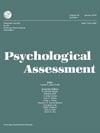MMPI-2-RF scales in conjunction with therapeutic assessment can provide important information in underreporting of suicidal risk in both inpatient and outpatient populations. This is the bottom line of a recently published article in Psychological Assessment . Below is a summary of the research and findings as well as a translation of this research into practice.

Featured Article | Psychological Assessment | 2021, Vol. 33, No. 8, 789-794
Underreporting on the MMPI-2-RF Extends to Extra-Test Measures of Suicide Risk
Authors
Laruen R. Khazem, The Ohio State University Wexner Medical Center
Katrina A. Rufino, University of Houston-Downtown; The Menniger Clinc
Megan L. Rogers, Ichan School of Medicine, Mount Sinai Beth Israel
Austin J. Gallyer, Florida State University
Thomas, E. Joiner, Florida State University
Joye C. Anestis, Rutgers University
Abstract
Detection of underreporting in suicide risk assessment remains a significant concern in clinical practice. The aim of this research is to examine whether underreporting based on elevated Minnesota Multiphasic Personality Inventory-2-Restructured Form (MMPI-2-RF) K-r and L-r scale scores may aid in identifying patients with suppressed scores on the Suicide/Death Ideation scale (SUI) and extra-test measures of suicide risk. We anticipated that, in voluntarily admitted psychiatric inpatients (N = 1,011) and individuals receiving outpatient services in a university-affiliated psychology clinic (N = 521), those indicated as underreporting would produce lower mean scores across SUI and extra-test measures of suicide risk, and that the magnitudes of the associations between SUI and extra-test scores would be strongest for those underreporting. A series of t tests and correlational analyses were conducted in both samples. Although those classified as underreporting consistently produced lower mean scores for SUI and extra-test measures of suicide risk, the magnitudes of the associations were consistently significant and stronger only in outpatients without K-r or L-r scale elevations. Clinical implications for this research include examining K-r elevations when assessing suicide risk and incorporating a therapeutic assessment approach to suicide risk assessment.
Keywords
suicide risk, MMPI-2-RF, underreporting, inpatients, outpatients
Summary of the Research
“High-risk populations have been observed to underreport or minimize suicide risk to avoid hospitalization or decrease time hospitalized. Suicide risk assessment procedures would benefit from including methods of identifying underreporting (UR), which may result in suppressed scores on self-report measures of suicide risk.” (p.789)
“In this research, we tested whether UR, measured by K-r and L-relevations, results in suppression of SUI scores and those of extratest suicide risk measures across settings (psychiatric inpatient and outpatient psychology clinic). In both settings, we first tested for whether mean differences in SUI and extra-test suicide risk scores exist based on UR (i.e., K-r and L-r examined together and separately), followed by testing the strength of the association between SUI and extra-test suicide risk measures between groups to assess the consistency of UR across measures.” (p.790)
“…the UR group endorsed lower scores across measures of suicide risk than those classified as non-UR in both samples; effect sizes were larger for extra-test suicide risk measures than SUI, supporting previous assertions that SUI may be slightly less impacted by UR than other suicide risk measures. Although SUI and C-SSRS were more strongly correlated in UR inpatients, SUI and BSS scores were more strongly correlated for non-UR outpatients, contrary to expectations.” (p.792)
“Range restriction of SUI and extra-test scores, particularly based for those K-r elevations, was observed across samples, supporting our hypothesis regarding the motives behind K-r elevations.” (p.792)
Translating Research into Practice
“We initially posited that individuals in inpatient and outpatient settings may have unique motivations to present themselves as more well-adjusted (elevated K-r) or virtuous (elevated L-r) than most people. Clinicians in both settings may consider noting K-r elevations in the context of reticence in disclosing suicidal ideation, while those with L-r elevations may be more inclined to disclose these thoughts. Although these validity scales are often both elevated, there may be some circumstances in which they are not; differences in treatment setting may account for divergent results.” (p.792)
“In outpatient settings, individuals may be concerned that disclosing suicidal ideation or intent may result in hospitalization or increased treatment.” (p.792)
“…current findings raise the possibility that those voluntarily hospitalized in private psychiatric inpatient facilities may be more motivated to disclose distress to quickly receive care and be discharged from treatment” (p.792-793)
“This research underscores the necessity of identifying those who are indicated as UR, particularly within the context of K-r elevations, and points toward the advantages of including both objective assessment and clinical interview in suicide risk assessment.” (p.793)
“Inpatients with L-r elevations and K-r elevations demonstrated a tendency to produce a restricted range of both SUI and C-SSRS scores; however, the range of C-SSRS scores was less impacted by range restriction than SUI. This observation points to the possibility that incorporating clinical interview in multimodal suicide risk assessments, particularly when impression management is suspected, may provide further opportunities to detect suicide risk. Indeed, once UR is identified, further assessment is indicated to ascertain whether a lack of endorsing suicide risk is truly indicative of low risk or if further clinical intervention is needed. In line with a collaborative assessment approach, effective clinical interview and discussion about the purposes, procedures, and potential outcomes of suicide risk assessments can serve to increase therapeutic alliance before the assessment is completed” (p. 793)
Other Interesting Tidbits for Researchers and Clinicians
“…the results of the current study indicate that when K-r and L-r elevations are examined as separate indicators of UR, results may not generalize in the same manner.” (p.793)
“Future research may examine whether employing therapeutic assessment, including incorporating both objective assessment and clinical interviews, may decrease UR and its impact in suicide risk assessment.” (p.793)
Join the Discussion
As always, please join the discussion below if you have thoughts or comments to add!






















